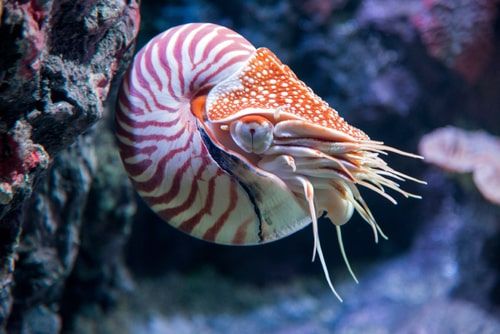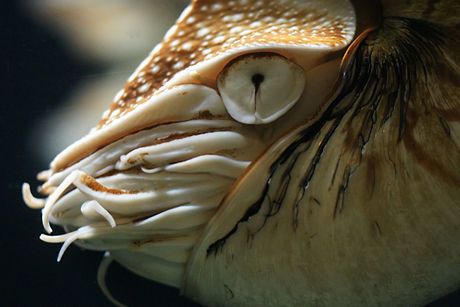The Nautilus: A Mollusk from the Jurassic to the Present
The nautilus is a mollusk related to octopuses and squids but, unlike them, it has an external shell. This is formed by several consecutive chambers that have been rolled up in a spiral.

The Nautilus, a mollusk that lives in shallow waters off the Pacific coast, is not only famous as an exhibit in a contemplative museum but has now acquired extraordinary importance because modern geological experimenters have found in it reliable proof that the Earth has been slowing down over time.
This animal has undergone a few evolutionary changes from its origin, in the Jurassic, to the present day. Both its physical characteristics and its behavior are very similar to those of its ancestors, which is why it is considered a living fossil. The nautilus is a mollusk related to octopuses and squids but, unlike them, it has an external shell. This is formed by several consecutive chambers that have been rolled up in a spiral.
At birth, the nautilus is housed inside the only chamber of its shell. When it grows, the space offered by the first chamber is no longer enough and it has to build a second, larger one, to which it moves as soon as it is ready since its construction takes a lunar month. The first chamber will be empty and he will live in the last one he built. When the space of the last one is insufficient for the size of the mollusk, he builds a new chamber, more spacious, to move into the following month, leaving the previous ones unoccupied.
During the day, the nautilus lies at the bottom of the sea because it is a nocturnal individual. Its activity begins at night when it rises to the surface to feed on plankton floating in the sea. As it sets out to get its food, its metabolism is activated and its functions become evident.

Evolution of Earth and Its Slowing Process
Among these functions is the ability to add chambers to its shell. It builds each chamber bit by bit, each day forming a narrow annular strip called a growth line. The sequence of strips forms the chamber, and at the end of a lunar month, the animal makes a partition or septum that separates the newly formed chamber from the next one it will build next month.
The formation of chambers is governed by the lunar cycle. This is why it forms a monthly chamber. In fossil shells from about 420 million years ago, nine lines are observed in each chamber, and in present-day shells, there are about 27.
What is the significance of this difference? It indicates that at that time the months were nine days long. This suggests that the Moon was closer, so it circled the Earth in less time than it does now. Nowadays the Moon is farther away and takes a little more than 27 days to travel its orbit around the Earth.
The months of the Moon, or phase change, take 27 and a half days. The Earth has slowed down due to the tidal forces exerted on it by the Moon. The slowing process is so slow that it is only noticeable after hundreds of millions of years.
420 million years ago, the day was 21 hours long; this means that the Earth made a complete turn on its axis in just that time. Today, because it rotates more slowly, it takes 24 hours to make the same movement.

The Nautilus: An Ancient Mollusck That Records Time
The deceleration is due to the friction that occurs when the seawater rubs against the surface of the seabed. The Moon pulls the Earth's waters toward itself and they move westward. As the Earth rotates eastward there is friction between the waters and the seafloor. The gravitational interaction between the Moon and the Earth determines the formation of the tides.
When the Moon is between the Sun and the Earth or when the Moon is behind the Earth aligned with the Sun, high tides occur. When the tide rises, the Earth is oblong by the distribution of seawater and changes its radius, thus decreasing its rotational speed. To conserve angular momentum, in compensation, the Moon moves away.
The deceleration of the Earth and the consequent distancing of the Moon is a theory based on the laws of physics. Now, the nautilus offers material proof, manifested in the growth lines and septa present in its shell.
Although other organisms record the passage of time, such as tree trunks with their annual rings, the nautilus is remarkable because it combines the recording of days and months with the formation of daily lines and the monthly construction of septa.
It is curious to observe how a fossil has provided data to support a geophysical theory, which makes us reflect on the convenience of multidisciplinary research.
By María de la Paz Salgado and Enrique Fierro Hernández. Source: Correo del Maestro, No. 32.




